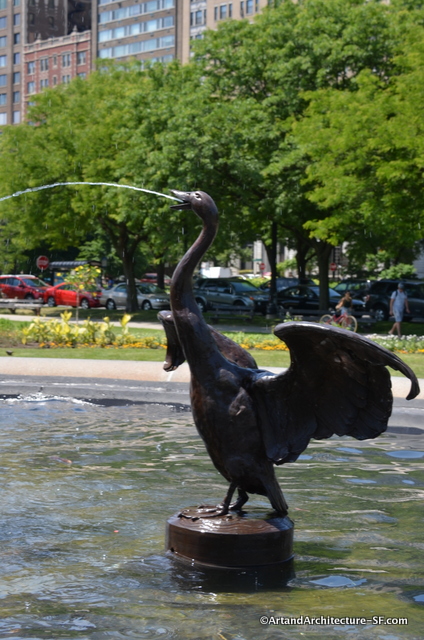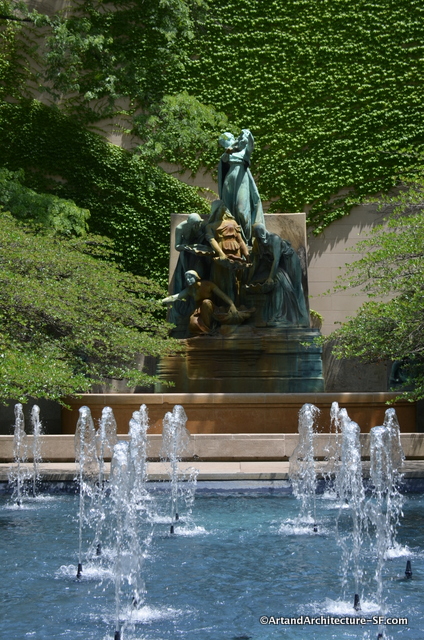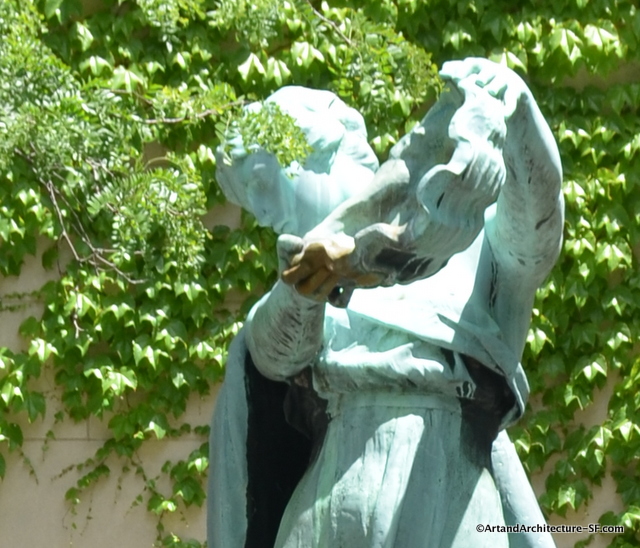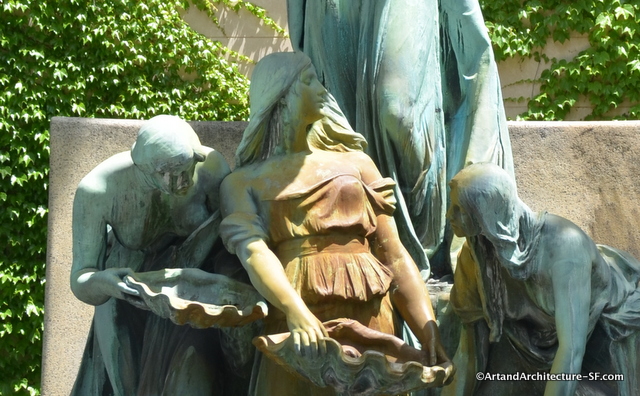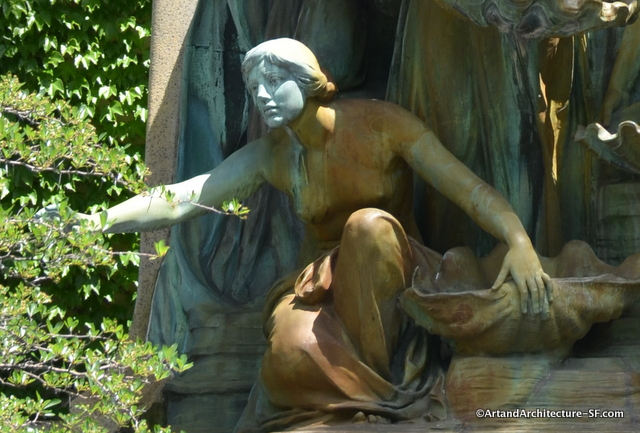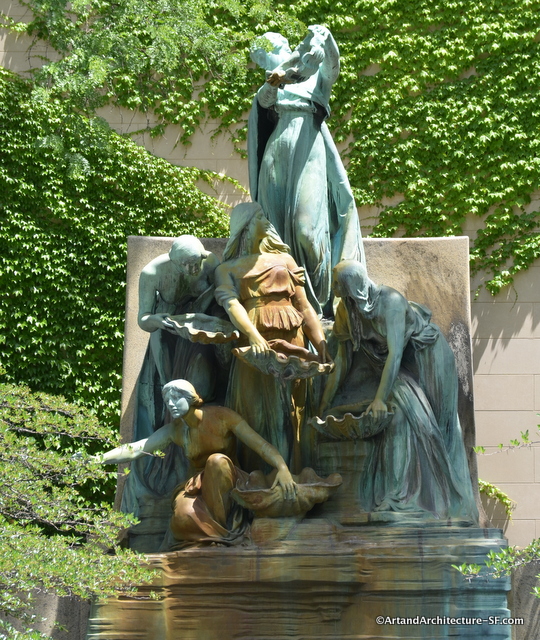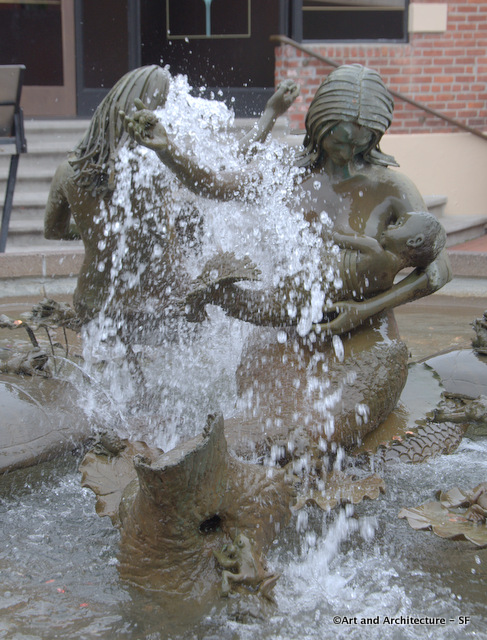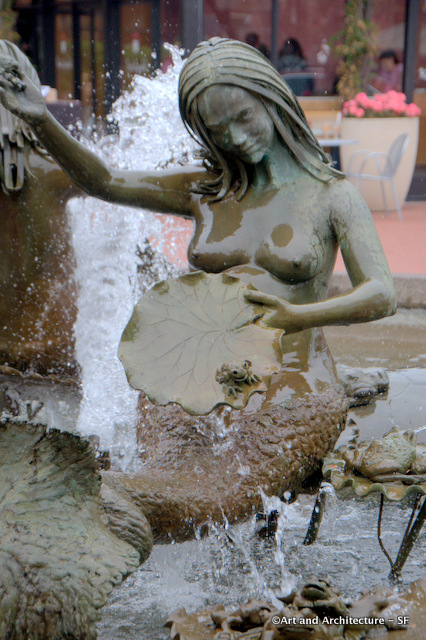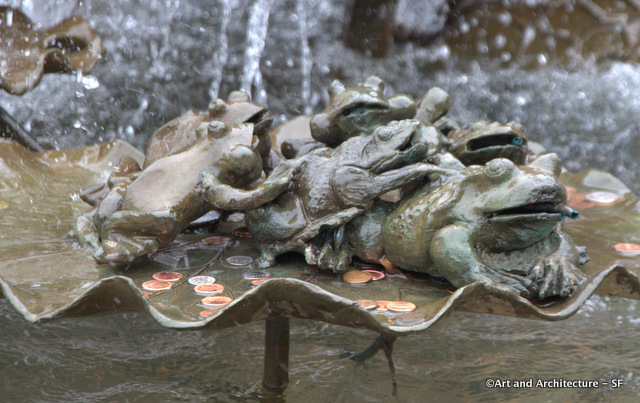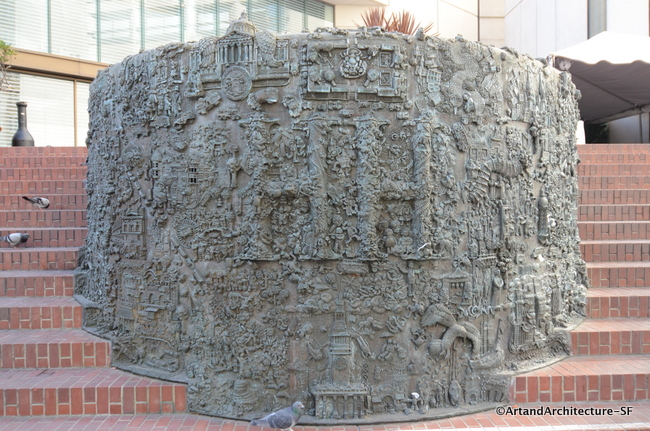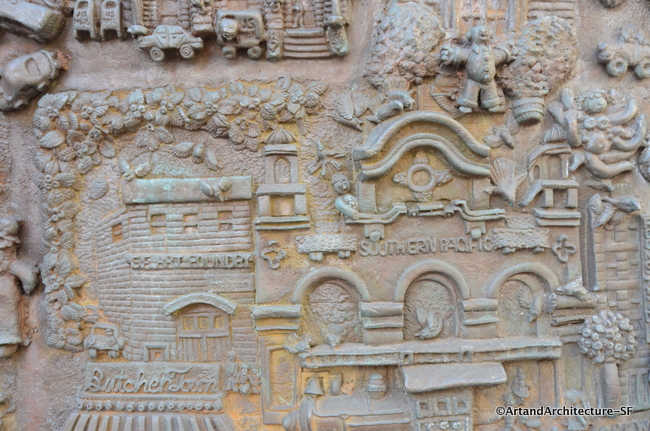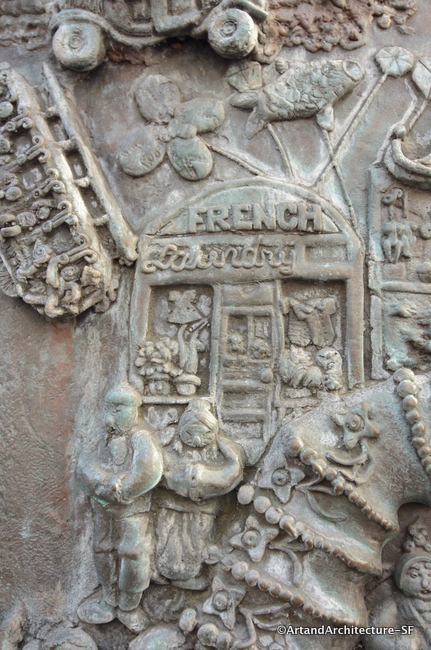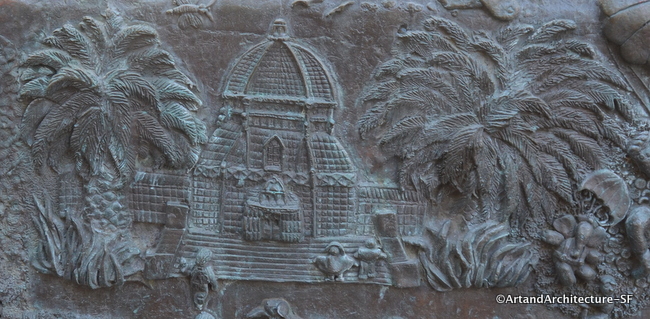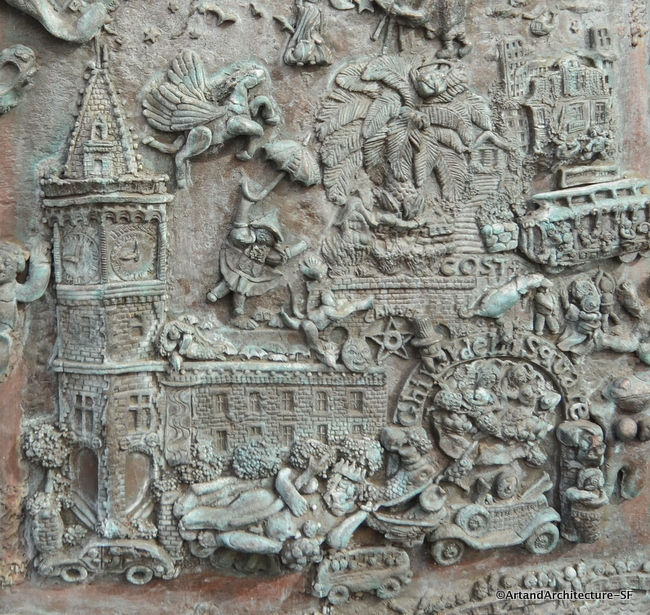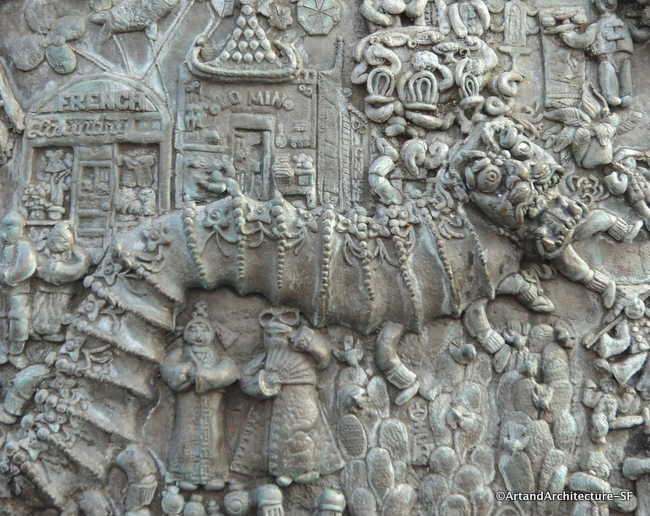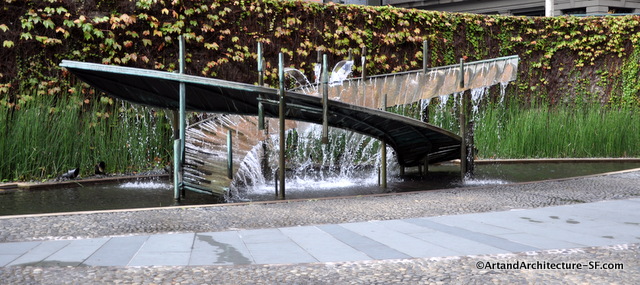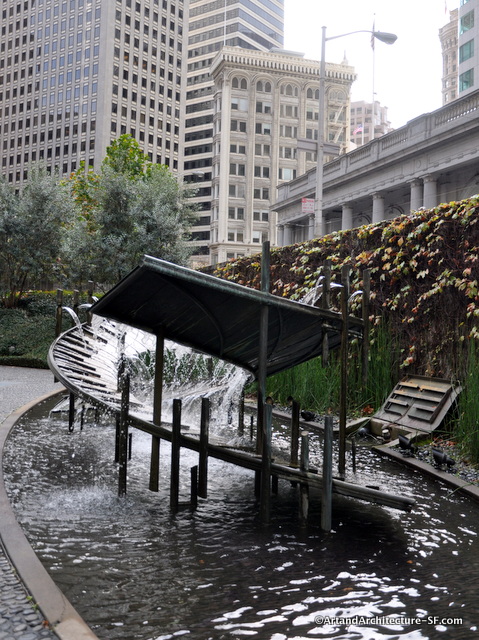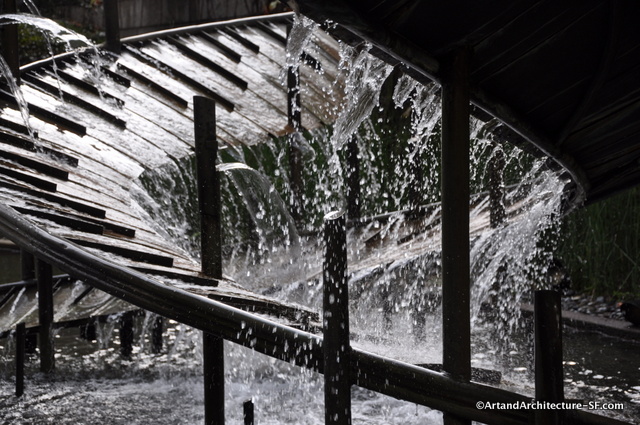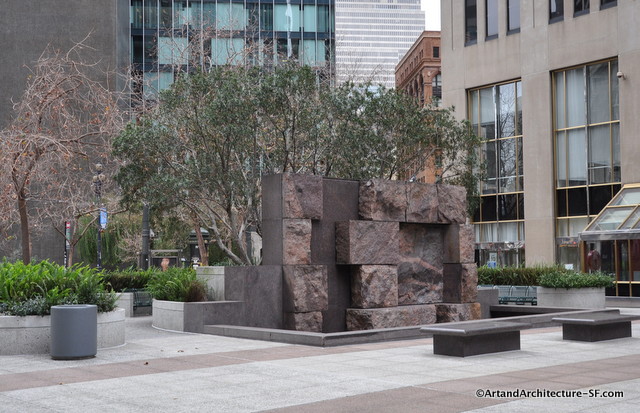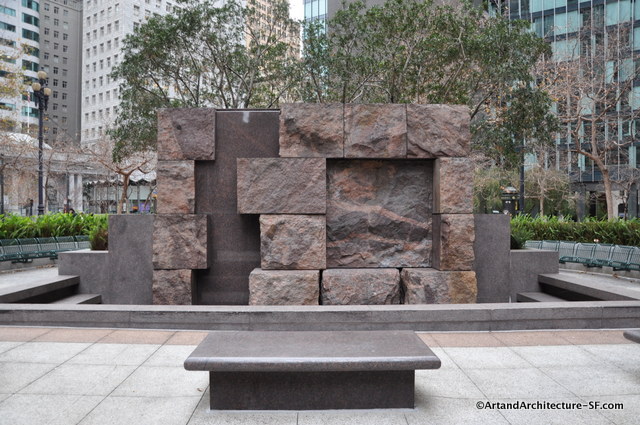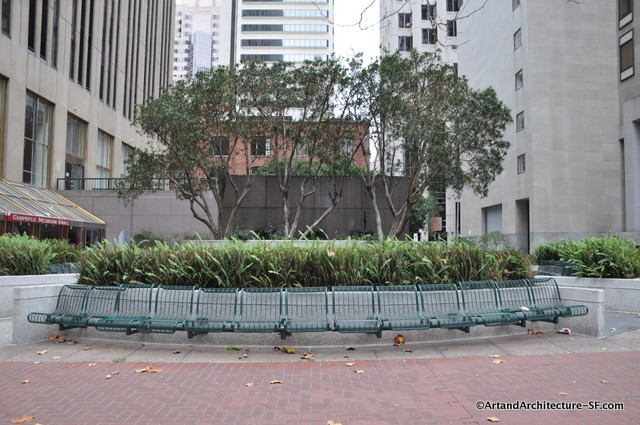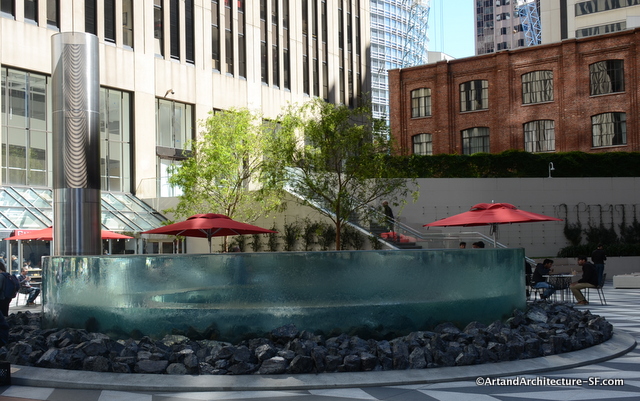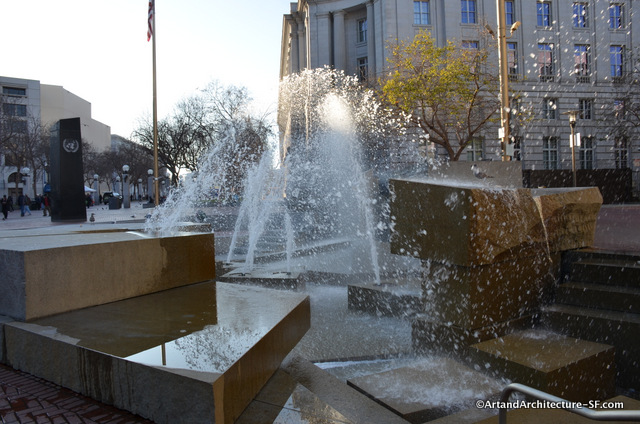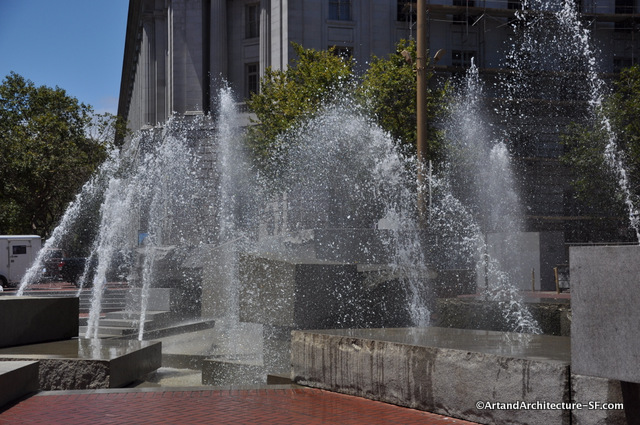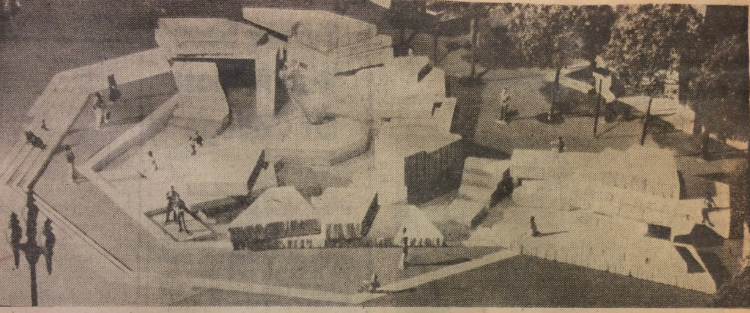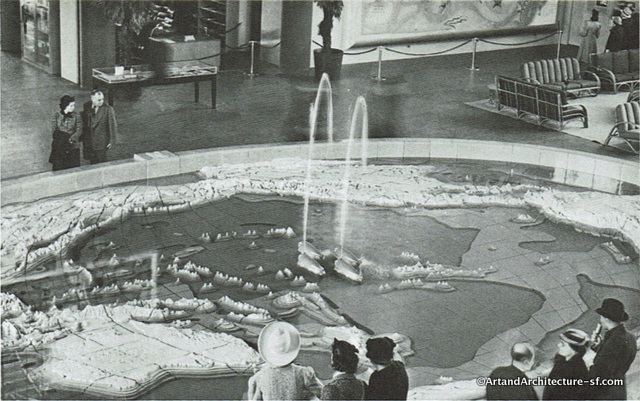
Sometimes you are given an opportunity to peek behind the scenes and today I had just one of those magical moments. Anne Schnoebelen, the passionate author of the website TreasureIsland1939.com asked me to come see the Pacific Fountain and bring along my friend Deborah Blake of Sullivan Masonry, to see about the restoration of the fountain.
The fountain has quite a fabulous history. It was part of The Golden Gate International Exposition (GGIE) a World’s Fair held on Treasure Island. The fair, celebrated, among other things, the city’s two newly built bridges. The San Francisco–Oakland Bay Bridge which opened in 1936 and the Golden Gate Bridge which had opened in 1937. The exposition was open from February 18, 1939, through October 29, 1939, and from May 25, 1940, through September 29, 1940.
The fountain, which was situated in the Pacific House during the GGIE, was a massive coordination between artist Antonio Sotomayor, architect Philip Newell Youtz and the Gladding McBean Company of Lincoln, California.
I highly suggest you head to Anne’s site to read all about the history of the fountain and its construction.
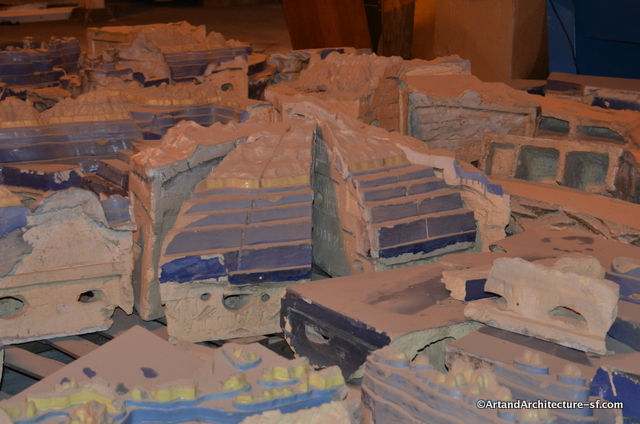
This is what the fountain looks like today.
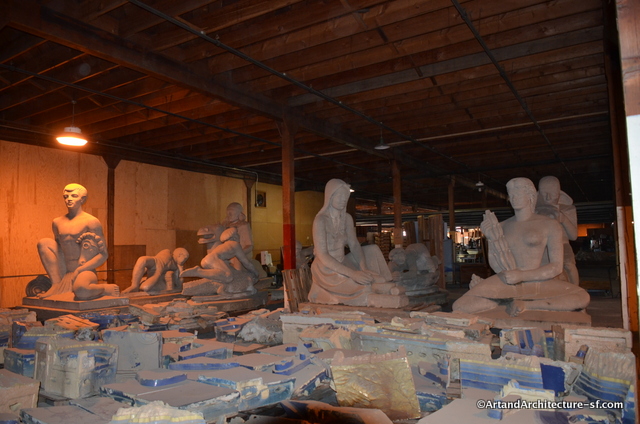
The restoration would be a major undertaking, including finding an appropriate place to house it, but the Treasure Island Museum hopes to do just that.
The fountain was accompanied in the Pacific House by six murals by Jose Miquel Covarrubias titled Pageant of the Pacific.
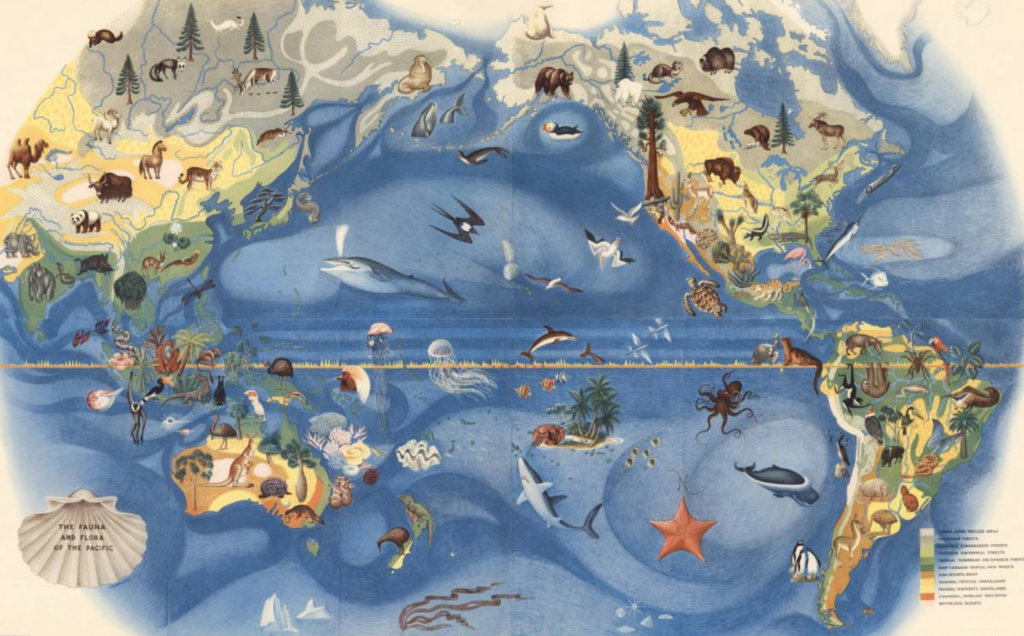
Jose Miguel Covarrubias, “Flora and Fauna”
Five of the murals still exist and are on loan from the San Francisco Treasure Island Development Authority to the DeYoung Museum.
It would be a wonderful San Francisco moment if these items could be brought together into one location and enjoyed together as a tribute to the Pacific.

The statues at the back of the room are some of the twenty sculptures created for the Court of the Pacific. Some are available for viewing in front of Building One.
If you are interested in donating to the Treasure Island Museum you can do so here. You are welcome to earmark your dollars for the restoration of the fountain. If you are a history buff and a financial angel, the museum would love to hear from you, you can reach out to Anne Schnoebelen through the museum.
The artists:

Philip Newell Youtz (1895-1972) was born April 27, 1895, in Quincy, Massachusetts. He was educated at Amherst College (1918) and Oberlin College (1919). During the period 1920-1922, he built schools and a non-sectarian Chinese Christian College in Canton, China. Upon his return, he taught at Teachers College, Columbia University. After receiving his architectural degree from Columbia University in 1929, he became curator of the Sixty-Ninth St. branch of the Pennsylvania Museum of Art in Philadelphia. In 1933 he became assistant director of the Brooklyn Museum of Art and served as director from 1934 to 1938. From 1938 to 1940, he was director of Pacific House at the Golden Gate International Exposition and the Pacific Area in San Francisco. Following the war where he served with the War Production Board, Youtz was a practicing architect in the New York City area. Here he invented the “lift slab” method of construction in which concrete slabs are raised on supporting columns to form different stories of a building. He eventually landed at the University of Michigan in 1957, where he was soon named dean of the College of Architecture and Design, a post he held until his retirement in 1964.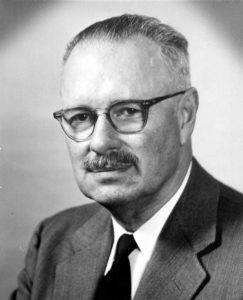
Jose Miguel Covarrubias (1904 — 1957) was born November 22, 1904, in Mexico City. After graduating from the Escuela Nacional Preparatoria at the age of 14, he started producing caricatures and illustrations for texts and training materials published by the Mexican Ministry of Public Education. At the age of 19, he moved to New York City armed with a grant from the Mexican government. Mexican poet José Juan Tablada and New York Times critic/photographer Carl Van Vechten introduced him to New York’s literary/cultural elite. Soon Covarrubias was drawing for several top magazines, eventually becoming one of Vanity Fair magazine’s premier caricaturists.
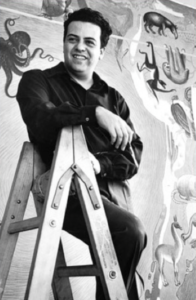 Gladding, McBean is a ceramics company located in Lincoln, California. It is one of the oldest companies in California, a pioneer in ceramics technology, and a company which has “contributed immeasurably” to the state’s industrialization. During the heyday of architectural terra cotta, the company “dominated the industry in California and the Far West.
Gladding, McBean is a ceramics company located in Lincoln, California. It is one of the oldest companies in California, a pioneer in ceramics technology, and a company which has “contributed immeasurably” to the state’s industrialization. During the heyday of architectural terra cotta, the company “dominated the industry in California and the Far West.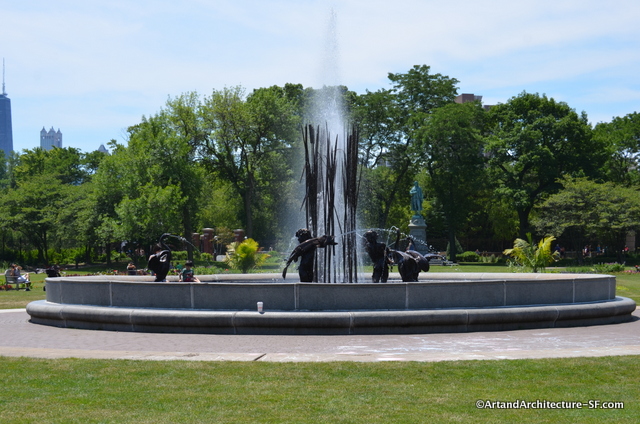 This whimsical fountain is known as both the Eli Bates Fountain and “Storks at Play”.
This whimsical fountain is known as both the Eli Bates Fountain and “Storks at Play”.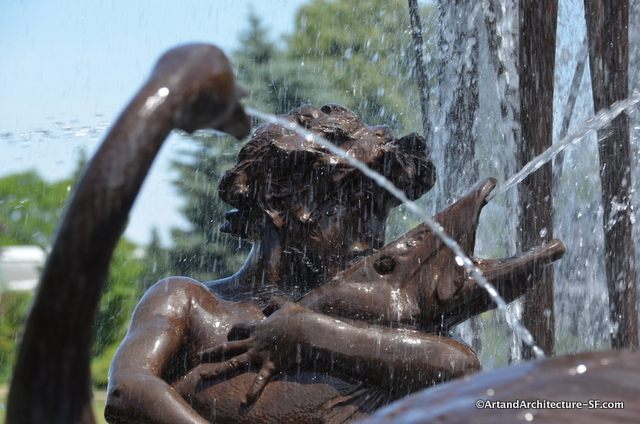 The figures for the fountain were cast by the Henry-Bonnard Bronze Company of New York.
The figures for the fountain were cast by the Henry-Bonnard Bronze Company of New York.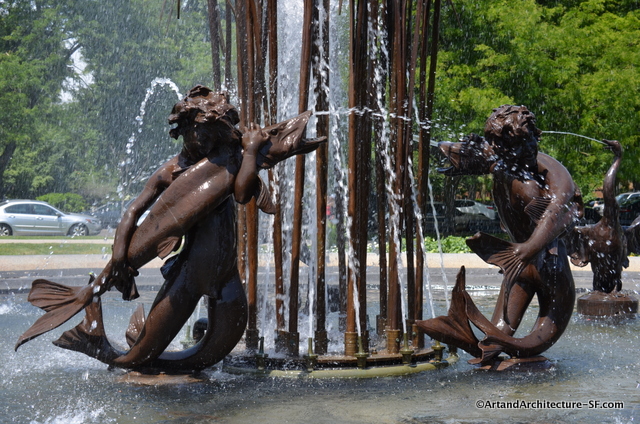 In 1888, Stanford White helped MacMonnies win two major commissions for garden sculpture, a decorative Pan fountain sculpture for Rohallion, the New Jersey mansion of banker Edward Adams, and a work for ambassador Joseph H. Choate, at Naumkeag, in Stockbridge, Massachusetts.
In 1888, Stanford White helped MacMonnies win two major commissions for garden sculpture, a decorative Pan fountain sculpture for Rohallion, the New Jersey mansion of banker Edward Adams, and a work for ambassador Joseph H. Choate, at Naumkeag, in Stockbridge, Massachusetts.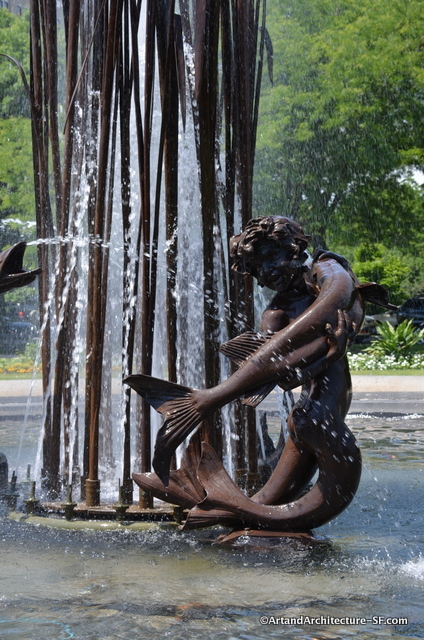 In 1894, Stanford White brought MacMonnies a commission for three bronze groups for the Soldiers and Sailors Memorial Arch in Brooklyn’s Grand Army Plaza.
In 1894, Stanford White brought MacMonnies a commission for three bronze groups for the Soldiers and Sailors Memorial Arch in Brooklyn’s Grand Army Plaza.